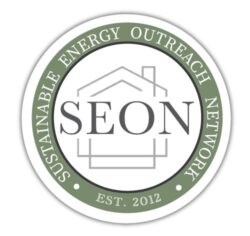In 1793, a momentous event took place in the heart of what would become the United States’ capital. George Washington, the nation’s first president, laid the cornerstone of what we now know as the U.S. Capitol Building in Washington, D.C. Little did he know that this historic act would set the stage for a building that would continue to inspire generations through its commitment to sustainability and high-performance building practices.
A Historic Beginning
George Washington’s act of laying the Capitol’s cornerstone was symbolic in more ways than one. It not only marked the birth of a new capital city but also signified the foundation of a democratic republic. The Capitol Building, designed by architect William Thornton, would serve as a testament to the ideals of the United States and the enduring legacy of its founding fathers.
A Modern Marvel of Sustainability
Fast forward to the present day, and the U.S. Capitol Building stands as a symbol of more than just political power. It is now a beacon of sustainability, showcasing the commitment to environmentally responsible practices. Here’s how the Capitol has become a leader in the green movement:
1. Energy Efficiency: The Capitol Building has taken significant strides in energy conservation, from energy-efficient lighting and HVAC systems to enhanced insulation and windows, all aimed at reducing energy consumption.
2. Renewable Energy: Solar panels grace the Capitol’s roof, harnessing the power of the sun to meet some of its energy needs.
3. Water Conservation: Water-efficient fixtures and landscaping practices have been put in place to minimize water usage.
4. Waste Reduction: The Capitol promotes recycling and waste diversion within its walls.
5. Sustainable Materials: Renovations prioritize the use of sustainable, locally sourced materials to minimize environmental impact.
6. Accessibility: The Capitol has improved accessibility for individuals with disabilities.
7. Historic Preservation: Preservation projects integrate sustainable practices while safeguarding the building’s historical and architectural significance.
8. Green Building Certification: The Capitol pursues LEED certification for sustainability in building design and construction.
9. Environmental Education: The Capitol Visitor Center educates the public on sustainability and environmental stewardship.
10. Transportation Initiatives: Public transportation and alternative transportation options are encouraged, with bicycle racks provided.
11. Procurement: Sustainable product and service procurement is a priority.
12. Food and Beverage: Vendors offer sustainable and locally sourced options.
13. Green Cleaning: Green cleaning products and practices are in use.
14. Pollution Prevention: Pesticide use is reduced, and stormwater runoff is managed effectively.
15. Energy Storage: A battery energy storage system helps manage energy load and grid reliance.
16. Smart Grid Integration: Integration with the smart grid enhances energy efficiency and reliability.
17. Demand Response: The Capitol participates in demand response programs to reduce peak-time energy consumption.
18. Green Roofs: Green roofs reduce stormwater runoff and improve air quality.
19. Biomass Heating: Biomass heating reduces reliance on fossil fuels.
20. Renewable Energy Microgrid: The Capitol explores the possibility of a renewable energy microgrid for backup power.
21. Renewable Energy Credits: Renewable energy credits offset reliance on fossil fuels.
22. Sustainable Transportation: Incentives encourage employees to use public transportation, walk, or bike to work.
23. Wastewater Treatment: An upgraded wastewater treatment system reduces pollution.
24. Environmental Monitoring: The Capitol continually monitors its environmental performance and makes adjustments as needed.
25. Sustainability Reporting: An annual sustainability report tracks progress and accomplishments.
26. Greenhouse Gas Emissions Reporting: An annual emissions report identifies areas for improvement.
27. Sustainability Training: Employees receive sustainability training to support the Capitol’s goals.
28. Partnerships: Collaborations with other organizations promote sustainability and best practices.
29. Public Outreach: The Capitol conducts outreach to educate the public about its sustainability efforts.
In a world where sustainability is paramount, the U.S. Capitol Building stands as a testament to how historic structures can adapt and lead the charge in environmental responsibility. Its commitment to green initiatives not only reduces its environmental footprint but also inspires others to follow suit.
George Washington may have laid the Capitol’s cornerstone, but its legacy of sustainability is an ongoing tribute to the enduring principles upon which the United States was founded. As the Capitol Building continues to evolve, it carries with it the ideals of its founders, striving for a more sustainable and environmentally responsible future for all.
Join us at SEON (Sustainable Energy Outreach Network) to learn more about high-performance news or to hire a high-performance expert.

